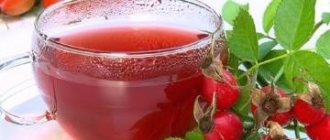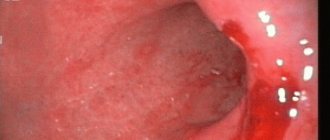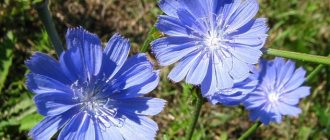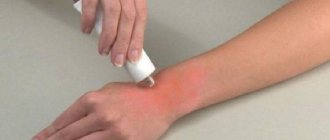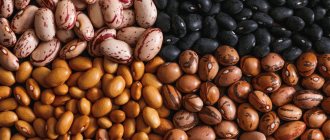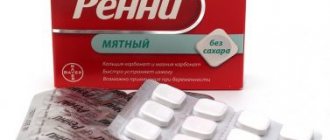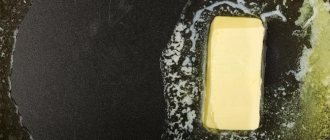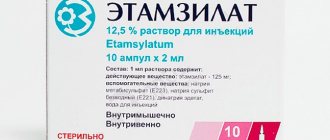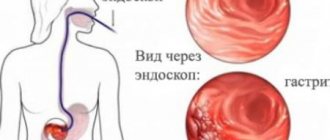Mint is a plant unique in its aromatic and medicinal qualities, widely used in folk and traditional medicine, as well as in cooking.
The benefits of mint can be obtained when consumed in any form: dried and fresh shoots, in the form of essential oil (menthol), infusions, extracts. Mint is used both internally and externally; it can be used for compresses and lotions. Mint is also used for massage and inhalation.
In dried form, it is added to refreshing drinks, baked goods, and used in the preparation of meat dishes and side dishes.
Peppermint has a pungent taste and a pleasant smell. Therefore, ever since this hybrid was discovered in England, among the spearmint bushes, at the end of the 17th century, it has become one of our most beloved plants. It is used to flavor everything from candies to alcoholic drinks.
After all, it is thanks to menthol that peppermint is a powerful medicine.
Positive effect on the stomach
Mint perfectly softens the stomach, preventing bloating and gas accumulation, which often happens after eating (even in the best restaurant).
Oil containing peppermint stimulates the flow of bile to the stomach and improves digestion. It is the antispasmodic components of this oil that prevent gastric gases from accumulating. Peppermint oil relaxes the muscles that block the passage between the stomach and esophagus, allowing gases to escape. In other words, peppermint, when taken internally, promotes good burping.
But if a person often suffers from heartburn, he should stay away from peppermint. If the sphincter muscle is too relaxed, stomach acid enters the esophagus, causing the sensation of heartburn.
Some people take peppermint to quell acute hunger pangs, as peppermint calms a rumbling stomach. But in this case the effect may be the opposite. Peppermint only increases your appetite. The muscles calm down only temporarily. Then hunger worsens with renewed vigor. And this is another beneficial effect on digestion: mint increases appetite and reduces stomach acidity.
Who is the herb contraindicated for?
- consuming a medicinal plant will be harmful for hypotension
- not taken for varicose veins
- individual intolerance to mint herb
- contraindicated in the first and second trimester of pregnancy
- nursing women
Despite the fact that mint treats gastritis, it is good for the stomach and digestion; it is better to discuss the advisability of consuming the herb with your doctor.
Peppermint (lat.
Mentha piperita
) is a herbaceous plant of the mint genus. It grows everywhere in gardens and orchards.
According to modern classification, the species is Peppermint
The genus
Mint
is included in the subfamily
Catnipaceae
family
Lamiaceae
, order
Lamiaceae
, class
Dicotyledons
, department
Angiosperms
, kingdom
Plants
.
There are about 25 species of mint, in addition, there are so-called resistant hybrids, of which there are also about 10 species. But most often it is peppermint that is used in medicine.
Peppermint acts as an anesthetic on the endings of the tactile nerves, increases gastric secretion, thereby stimulating appetite.
Infusions are prepared from peppermint leaves that help with gastrointestinal disorders, gas accumulation, nausea and vomiting.
The following collection reduces fermentation and putrefactive processes in chronic colitis:
- peppermint, leaves - 25.0
- caraway seeds, fruits – 25.0
- common fennel, fruits – 25.0
- valerian officinalis, root - 25.0.
Take 1 glass of infusion in the morning and evening. (G.A. Kharchenko, A.V. Burkin)
In cases of persistent stool disturbance (diarrhea), without confirmation of an infectious nature, the following preparations, prescribed along with adaptogens and phytosedatives, help well:
- St. John's wort, yarrow, peppermint - in equal proportions (1 tbsp per 500.0 boiling water)
- valerian roots - 2 parts by weight
- chamomile flowers - 3 parts by weight
- caraway fruits - 5 parts by weight
One tablespoon of the mixture per 200.0 boiling water, leave for 40 minutes, take 1 tablespoon-⅓ glass three times a day before meals.
Vomiting as a fixed nervous disorder in childhood responds well to treatment with one of the adaptogens and a collection of the following herbs:
- lemon balm - 3 parts by weight
- peppermint - 3 parts by weight
- chamomile (flowers) – 4 parts by weight
One tablespoon of the mixture per 200.0 boiling water, leave for 1 hour, take 1 tsp - 1 tbsp. three times a day. (Yu. F. Antropov).
Collections of medicinal plants recommended for children with gastritis, enteritis, enterocolitis can be viewed here.
The influence of medicinal plants on the pH of gastric juice was studied in 45 patients with chronic gastroduodenitis with increased acid-forming function of the stomach. The best acid-neutralizing effect on the acidity of gastric juice was found in an infusion of peppermint leaves (from 0.98±0.04 to 1.75±0.09) 30 minutes after administration (E.Y. Arkhii, V.Yu. Koval) .
Preparations containing the active ingredient peppermint oil
(
Menthae piperitae oleum
)
Mint tablets
(
Mentha piperitae tablets
) - tablets of white color, sweet, cooling taste. A product of plant origin, it has a sedative, moderate antispasmodic, choleretic, antiemetic effect. Indications for use. Mint tablets are used for nausea, vomiting, smooth muscle spasms, and unpleasant bitter sensations in the mouth.
Directions for use and dosage:
Prescribe 1-2 tablets per dose under the tongue.
Mint tablets are produced by FarmaDon, Moscow Pharmaceutical Factory (Russia). Peppermint oil ( Menthae piperitae oleum
) Peppermint oil has an extremely beneficial effect on the digestive system.
A product of plant origin, used for cholecystitis, cholelithiasis, hepatitis, diarrhea, dyspepsia, gastroenteritis, constipation, gastralgia, aerophagia, flatulence. Relieves the condition of stomach cramps and intestinal colic, as well as food poisoning. Helps with heartburn, nausea and vomiting. Peppermint
One capsule contains: peppermint oil, ginger oil, fennel oil
. Indications for use: for nausea, vomiting, colic, flatulence, esophageal spasms and intestinal colic. Irritable bowel syndrome. Non-ulcer dyspepsia. Duodenogastric reflux. Helicobacter pylori overgrowth, an overgrowth of bacteria in the small intestine. Accelerates the elimination of intestinal gases. Directions for use and dosage:
1 capsule 3 times a day between meals. Peppermint oil is taken orally.
The combined substance contains Peppermint leaves oil + Sulfanilamide + Sulfathiazole + Thymol + Eucalyptus oil (Menthae piperitae foliorum oleum + Sulfanilam /> Ingalipt, an aerosol for topical use for infectious and inflammatory diseases of the ENT organs and oral mucosa (tonsillitis, pharyngitis, laryngitis, aphthous and ulcerative stomatitis); produced by Moskhimfarmpreparatov named after N.A. Semashko, Altaivitamins (Russia).
For intestinal problems
Although it remains controversial, some research suggests that peppermint's ability to relax muscles (as in the bowels) makes it effective in relieving the painful symptoms of irritable bowel syndrome, a condition characterized by constipation, diarrhea, bloating, and colic.
One study found that of the 75% of participants who took peppermint capsules daily, there was a significant reduction in IBS (irritable bowel syndrome) symptoms compared to those who did not.
Theoretically, it looks like this: peppermint interacts with substances that cause contractions of the intestinal muscles.
If a person often has an achy stomach, they may enjoy sipping peppermint tea. Tea is better than mint lozenges. Many peppermint teas have artificial flavors added to them.
The following healing procedure is recommended:
- Pour boiling water over 1-2 teaspoons of peppermint leaves for a few minutes;
- then immediately drink this tea in small sips.
But this tea should not be given to small children. For them, the menthol contained in peppermint oil can cause suffocation.
Healthy recipes
Can mint cause heartburn? This is quite likely if the medicinal tea or decoction is not prepared correctly. When brewing overly concentrated drinks, essential oil does not restore the gastric mucosa, but unnecessarily irritates it. Glandular cells begin to produce excess amounts of caustic juice - the main cause of heartburn. To prepare tea, it is enough to pour a glass of boiling water over 5 fresh leaves or a level teaspoon of dry plant material. After 20-30 minutes the drink is ready to drink. You have to spend more time on the decoction:
- you need to put 10 fresh large leaves or a tablespoon of dry grass in the pan;
- then pour in a glass of boiling water and simmer over low heat for 5-7 minutes, cool and strain.
Relaxing and concentrating effect
Due to its cooling and soothing effects, a large percentage of peppermint is found in relaxing bath preparations and tea recipes for insomnia. But there is little scientific evidence to support these properties of peppermint.
Results from a laboratory study on animals suggested that peppermint extract has a calming effect on the central nervous system. And as funny as it may seem, inhaling the aroma of peppermint helps manage concentration and attention. This is simply a unique property: calming and increasing concentration.
How to brew and drink: step-by-step instructions
The selection of ingredients depends on the nature of the digestive system disorder.
Tea recipe for nausea attacks
Does it help with nausea? Yes, and to prepare a healing infusion you will need peppermint. The leaves contain a large amount of menthol, which relieves cramps and speeds up the process of digesting food.
Ingredients for making the drink:
- mint (1 tsp);
- honey (1 tsp);
- water (200 ml).
- To prepare the infusion, place 1 tsp in a teapot. dry grass.
- Pour a glass of boiling water into the container and cover with a lid.
- The tea will be ready within 10 minutes.
To filter the cake, you can use a strainer. The product should be taken 2 times a day. To enhance the healing effect, you can add a teaspoon of honey to the infusion. This drink relieves attacks of nausea and intestinal spasms.
From vomiting
To get rid of regular vomiting, you can use a decoction based on lemon balm.
Ingredients:
To prepare the infusion you need:
- Grind 2 tbsp. l. fresh leaves.
- Pour a glass of boiling water over the mixture and cover the container with a lid.
The finished infusion should be drunk before eating, 100 ml.
For heartburn
Does it help with heartburn? Yes. To combat heartburn, you need to take peppermint leaf tea.
Ingredients:
To prepare the drink you will need:
- 1 tbsp. a spoonful of crushed leaves and a liter of water.
- If desired, you can add honey and a few drops of lemon juice.
Regulating hormone levels
Research by scientists has shown that the beneficial quality of mint for women is that it will help them reduce hair growth in places where they normally should not grow (for example, on the face). The fact is that increased hair growth in women is a consequence of an excess of male hormones, and mint reduces the concentration of the male hormone in the blood.
Also, for women, mint will help minimize unpleasant menopausal phenomena, relieve menstrual pain and conditions during the premenstrual period. And this is also due to the effect of mint on hormone levels.
Traditional medicine - help in the treatment of stomach ulcers
However, we should not forget about various folk methods. Yes, they cannot be the main treatment method, but they can perfectly complement the therapy prescribed to you.
It will help you heal even faster. What means can be used?
Most often, juice from potatoes and cabbage, teas and infusions with herbs have long been used for these purposes: mint, rosehip, plantain, St. John's wort, string, celandine, aloe, burdock.
Potato and cabbage juices contain a lot of useful substances. So, it contains vitamin U, which helps in healing existing defects. It is better to drink them before breakfast.
Various combinations with herbs are also popular in the treatment of gastritis and gastric and duodenal ulcers - they complement each other and help achieve maximum results.
For example, most often they mix St. John's wort, celandine and string in equal parts, pour boiling water over them and then drink this solution on an empty stomach. These herbs help to quickly heal all damage to the mucous membrane.
Especially useful are herbs such as mint, rose hips and... plantain.
Yes, that plantain that we applied to our broken knees in childhood helps heal not only scratches. For treatment, decoctions of dry and fresh leaves, seeds, and even plantain juice are used.
Thanks to its unique properties, it envelops the mucous membrane of the stomach and duodenum, thereby protecting it from damage by acid.
But most of all, plantain helps regenerate the epithelium in already damaged areas.
Mint is known not only for its unique smell and soothing, relaxing effect. Since ancient times, it and other herbs have been used to treat abdominal colic, cramps, and pain.
Thanks to the substances found in its leaves and flowers, mint relaxes smooth muscles. This helps reduce pain.
In addition, it reduces the production of hydrochloric acid. That is why it is recommended to drink tea with mint at night - it helps to calm the nervous and digestive systems that are tired during the day. It can also be combined with other herbs.
It is also recommended to use rosehip decoctions to treat stomach and duodenal ulcers.
This sour red berry, which each of us has known since childhood, is simply a storehouse of vitamins and nutrients.
Firstly, rose hips contain a high dose of vitamin C. This substance helps strengthen the immune system, and this in turn helps to increase our body's defenses.
Secondly, the substances contained in the berries also protect the mucous membrane of the stomach and duodenum, enveloping them.
But in order for these simple herbs, so familiar to us from childhood, to have a positive effect and not cause harm, we need to approach treatment wisely.
The main thing is not to refuse the treatment prescribed by the attending physician. It is not always possible to defeat a disease with folk remedies alone. In addition, monitor the quality of herbs and herbs.
If possible, purchase herbs at the pharmacy. If you want to collect them yourself, then do not use herbs collected from roads, factories, industrial fields and farms.
There they may be contaminated with pesticides and heavy metals, which obviously will not improve your health.
It is also very important for further recovery to follow a special diet so as not to burden the already damaged stomach.
Well, you definitely need to give up alcohol and smoking. Without this, any ideally selected treatment will be ineffective.
Peppermint for hair
If you want to have beautiful and healthy hair, then you need to take good care of it. Taking care of your hair doesn't necessarily involve going to beauty salons or hairdressers. It is enough to regularly make hair masks at home and wash them in various decoctions. And one of the herbs you need to pamper your hair with is peppermint.
Therefore, you should learn a few recipes that will help make your hair irresistible.
First of all, write down the recipe for a mint hair rinse (decoction).
- For this decoction you will need: two tablespoons of mint, which you will need to pour boiling water over and leave for half an hour.
- Regularly rinse your hair with it after washing and your wealth will become shiny, silky and fragrant.
You also need to know what kind of mask can be made from peppermint.
For this you will need:
- 2 tablespoons fresh mint leaves,
- 1 tablespoon cosmetic white clay,
- 1/2 cup water + 2 tablespoons boiling water.
Start by mixing water and mint. Use a blender to completely chop the leaves.
Pour this liquid into another container and add clay to it.
This mixture should be mixed with clay until it acquires the consistency of liquid dough (if you immediately get this consistency, then you don’t need to add anything. If it turns out a little liquid, add clay).
Next, pour a couple more tablespoons of boiling water into it and after twenty-five minutes, pass the mask through the filter.
This mask should be applied to the roots of the hair and then along the length and kept for 15-20 minutes. There is no need to wash it off with shampoo, as the clay washes hair perfectly.
Combing with mint oil is very good. To do this, you need to apply a few drops of peppermint essential oil to your comb. The comb is ready for refreshing and healing treatments with your hair.
Benefits and harms
With increased
- To improve the patient's condition, the most popular type of mint is used - peppermint, the main active ingredient of which is menthol. This substance gives tone to the mucous walls of the intestines and eliminates pain. Peppermint contains the most menthol - from 50 to 80%, so its healing properties are higher than those of other types.
- In addition to essential oil with menthol, the leaves and flowers contain many vitamins and microelements, essential amino acids, and phytoncides. For patients with gastritis, tannins and flavonoids are most important. They are the ones who provide the medicinal effect.
- The plant itself is used in folk medicine as an anti-inflammatory agent, so mint can destroy harmful bacteria and the cause of gastritis - Helicobacter pylori. In addition, a decoction of its leaves has a sedative effect and reduces the nervous excitability characteristic of asthenic syndrome during gastritis.
- With gastritis with high acidity, hydrochloric acid is produced in large quantities. Peppermint can cope with symptoms such as:
- Sour belching after eating.
- "Hungry" pains.
- Heartburn.
- Stool disorders.
- Bloating.
- Flatulence.
Article on the topic
The benefits and harms of peppermint tea.
At low
Field mint is a wild plant. But if desired, it can be planted at home. For gastritis with low acidity, it improves appetite and increases acidity. It also eliminates signs of inflammation and reduces pain.
Combats the following symptoms:
- Nausea.
- Vomit.
- Flatulence.
- Diarrhea.
- Intestinal atony.
Advice
For both types of gastritis, eating mint will not harm the stomach if used in moderation. It is also important not to have concomitant diseases that are contraindications for treatment with mint. In other cases, the plant will benefit you.
Negative effects on the body
As already mentioned, mint reduces the concentration of male hormone in the blood. While this is beneficial for women, men may experience an unpleasant side effect such as decreased sexual desire. However, if you do not take it regularly, the effect will be very short-lived and quite weak. But it is not recommended for men to take mint often and in large quantities.
We should not forget that mint contains a lot of essential oils that can cause allergies in people. Therefore, mint should be used with caution for the first time, especially for young children.
Mint lowers blood pressure, so those people whose blood pressure is already low (hypotonics) can take it with great caution.
Children should also not abuse this plant; under 5 years of age it is generally not recommended to use it, since their body is very sensitive, and this plant is quite strong.
So, mint is a wonderful plant that has a number of valuable medicinal properties. However, when using it, one must proceed from personal characteristics. Like any other medicine, mint is only good when used in reasonable quantities.
Share “Peppermint medicinal properties and contraindications”
Alternative medicine uses many methods to combat gastrointestinal diseases. Among the main additional medicines for gastritis is mint. The aromatic plant not only soothes irritated mucous membranes and normalizes acidity levels.
Is it possible or not to drink herbal tea if you have stomach acidity problems?
Increases or decreases:
- Peppermint helps with high acidity
- If you have low acidity, you should give preference to mint, which increases the activity of the gastric glands.
Of course, you shouldn’t just self-medicate. But as an additional medicine, mint is quite suitable.
Important!
Before using this aromatic plant, be sure to consult your doctor to avoid complications and unpleasant consequences.
Healing properties of mint
The plant has antibacterial properties, due to which signs of the disease are suppressed and associated phenomena such as heartburn and cramps are eliminated. The aromatic herb can be found in almost every garden; it grows quickly, standing out among other plants for its aggressiveness and unpretentiousness.
This fragrant plant contains menthol, which is an essential oil. It is better to collect the medicinal plant before the flower stalks are released; at this time, the leaves and stems of mint contain the largest amount of valuable substances.
During the period of treatment with mint, digestion is improved, attacks of nausea are reduced, the emotional background is straightened, and discomfort in the stomach is eliminated.
Since time immemorial, mint has been credited with miraculous properties that help prolong youth and life in general.
Characteristics of greenery
Mint is an amazingly multifunctional plant that is widely used both in medicine and in everyday life. Essential oils have an almost magical effect on the human body. It is for this property that this representative of the flora fell in love.
Mint includes as many as 25 varieties, which have one thing in common - a specific aroma, which it owes to its chemical composition. It is easy to recognize - it is a herbaceous plant that can reach a length of up to 1 meter. The stem of mint is erect and has many leaves, which are elongated elements with jagged edges. The flowers cling tightly to the top of the shoot and have a reddish-violet hue. The period from June to September is considered the peak of mint flowering.
On an industrial scale and in the gardens of summer residents, peppermint usually grows, which was obtained as a result of crossing its wild representatives and cannot be found in nature. Free-growing field or meadow mint, prefers damp soil and settles on the banks of reservoirs. But it can also be used for medicinal purposes.
How to take mint for gastritis
The aromatic plant has one distinct quality: it successfully fights the cause of gastritis - the bacterium Helicobacter pylori. However, the healing properties of mint extend to the entire digestive system.
Due to the action of menthol oil, appetite is stimulated, and food begins to be absorbed faster and better, while heartburn is suppressed.
The therapeutic effect is achieved through complex treatment with medications and mint infusions, decoctions and tea.
It is advisable to prepare a suitable drink in this case based on mint, yarrow, St. John's wort and dill seeds. The ingredients are mixed in equal proportions, except for mint, which should be taken in double volume.
You need to take 3 tablespoons of the mixture and add a liter of water. Prepare the drink in a water bath for 1.5 hours. Take the cooled liquid on an empty stomach for two weeks. It is not recommended to store the drink for more than two days; it should only be consumed fresh.
Gastric collection for gastritis with high acidity
Ready-made stomach preparations can be found in pharmacies, but you can prepare them yourself.
For gastritis with increased secretion, a collection that consists of equal parts of calendula, chamomile, fireweed, horsetail, immortelle, yarrow, lemon balm and nettle leaves, to which are added calamus root, corn silk, and plantain leaves, is considered effective.
For acute gastritis, a mixture of 4 components is used: chamomile, string, calendula, yarrow, which relieve muscle spasms, heartburn and nausea. To prepare the infusion 2 tbsp. Pour boiling water (0.5 l) over spoons of the mixture and leave for 20 minutes. You should drink 150 ml of the product throughout the day.
Harvesting the plant
To grow mint, special skills and agrotechnical knowledge are not required. She does not need your care and is able to independently make her way to life, even to the detriment of other garden plants.
The optimal time for collecting medicinal herbs is mid-summer; until this time, valuable qualities are concentrated in the plant. Mint greens should be dried in a suspended state. Mint should be stored in canvas bags or glass containers. It may not lose its properties for up to two years.
Treatment of stomach ulcers
The most important thing for successful treatment is correct and quick diagnosis. If you experience the symptoms described above, consult your doctor. He will select the right drug therapy for you.
Drugs will be prescribed that reduce the production of hydrochloric acid, as well as drugs that help protect the gastric and duodenal mucosa from aggressive pH.
If Helicobacter bacteria are detected, antibiotics will be prescribed.
In addition, it is necessary to avoid alcoholic beverages.
In addition, you need to follow a certain diet and exclude from your diet processed foods, fried, spicy, very salty, as well as various sauces, seasonings, etc.
You can only eat boiled or steamed food.
Recipes with mint
Complications of gastrointestinal pathologies can be prevented with the help of aromatic tea, mint infusion and other natural remedies. We offer the most effective recipes, tested in practice, for your consideration.
You can take either dry mint herbs or its fresh leaves. 20 g of leaves are poured with boiling water and then simmered in a water bath for 15 minutes. Next, the solution is infused and consumed several times a day.
It is better to take spearmint and Korean mint in the morning on an empty stomach, lemon balm after three hours, and drink peppermint throughout the day.
A medicinal infusion can be prepared either from mint or from other types of plants: chamomile, sage, yarrow, St. John's wort. To prepare, you will need a small spoon of herb and 200 ml of water.
Leave the mixture for half an hour and take a tablespoon before meals. This is an excellent prevention of any diseases of the digestive system.
Peppermint leaf infusion
This method is the simplest and most accessible. You can throw a few leaves of the plant into the regular tea you are used to, and a fragrant and healthy drink is ready. If you add chamomile to the drink, its healing properties will double.
All medicines presented are not the basis of treatment. They only complement the main drug therapy and enhance the effect of treatment.
Diseases of the digestive tract are characterized by inflammation of its mucous membrane. To treat the stomach in folk medicine, herbal preparations are often used. Mint for gastritis is a good helper. It soothes the irritated organ, regulates acid levels and restores the epithelium.
The antibacterial properties of the medicinal plant suppress the source of the disease, eliminating accompanying symptoms such as heartburn and cramps. Fragrant grass grows in every garden plot and is easy to care for. There are several types of it, which will allow you to select the necessary inflorescences for the corresponding manifestations of gastric ailments.
Contraindications
Before treatment with mint, it is recommended to first consult a gastroenterologist. In some cases, a plant may have contraindications that prohibit its use. If mint causes an allergic reaction, you will have to completely limit any contact with it. The body will react negatively to such treatment.
Pregnancy is not the best time to use mint to improve your health. Even nursing mothers should be aware of possible allergies.
Folk remedies for the treatment of gastritis are effective and safe when used correctly. Plantain, various herbs for the treatment of gastritis, potato and cabbage juice: perfect for treating gastritis at home. But treatment must be agreed with a doctor.
It is not recommended for children under 7 years of age to interact with mint, as the plant lowers blood pressure. Skin dermatitis can only be aggravated by contact with some of the substances included in the composition. Mint is completely contraindicated for hypertensive patients.
An unpleasant disorder - gastritis, worsens the process of digesting food in the stomach, destabilizes the functioning of the entire gastrointestinal tract, and nutrients are less absorbed in the body. The disease requires adjustments to the diet and consultation with a gastroenterologist. Eating mint for gastritis helps improve stomach function.
Useful properties of mint
The chemical composition of fragrant greenery contains essential oil - menthol. Most of it is contained in the leaves and stem, which need to be collected before the grass blooms.
This element is the most valuable in the product and has the following properties:
- antiseptic;
- antispasmodic;
- choleretic;
- sedative.
When treated with mint, inflammation, pain, pain in the epigastrium and duodenum are reduced. Patients note a decrease in attacks of nausea during gastritis. At the same time, digestion improves, abdominal discomfort goes away and the emotional background normalizes. The plant is also actively used for neuralgia and respiratory tract diseases.
Mint is suitable for the treatment of many diseases, however, be careful in the following cases:
- hypotension;
- phlebeurysm;
- individual intolerance.
Curly mint
The plant has many ornate leaves, curled at the edges. The taste, smell and properties are similar to peppermint, but spearmint does not contain menthol. That is why the plant is recommended for nursing mothers in the treatment of gastritis. Curly mint increases the secretion of the mammary glands and does not harm the newborn.
The decoction will help with:
- spasms;
- erosions;
- vomiting.
Curly myta is grown in soil with good fertilizers, collected at the end of spring, before the flowers appear.
Use of aromatic plant
Mint has antibacterial properties, which makes it possible to exclude the very cause of gastritis - the Helicobacter pylori bacterium.
The healing qualities of mint for stomach ulcers are aimed at the entire gastrointestinal tract system. Menthol oil stimulates appetite and improves food absorption, thereby suppressing heartburn. The decoction can be taken in combination with other natural drugs, which enhances the therapeutic effect and brings great benefits.
Use the following recipe for a medicinal drink:
- mint - 2 tbsp. l.;
- yarrow - 1 tbsp. l.;
- St. John's wort - 1 tbsp. l.;
- dill seeds - 1 tbsp. l.
Mix the ingredients, take 3 tbsp. l. dry mixture, add a liter of liquid and brew in a water bath for about an hour and a half. Strain the cooled drink and take on an empty stomach for 2 weeks.
What is the plant useful for?
The beneficial properties of mint were described by ancient Roman doctors and scientists.
The effect of mint on the body
- Antiseptic and antibacterial properties reduce the inflammatory process in the stomach.
- The choleretic effect helps digest food.
- Thanks to its antispasmodic effect on the smooth muscles of the stomach, mint relieves pain.
- A mild sedative effect relieves emotional stress. Cures stress-related gastritis.
Mint in medicine
The components of the plant are used in pharmaceutical practice. Menthol is included in many certified medications.
Eating mint
The beneficial properties of the culture have been used for the following gastrointestinal diseases:
- acute and chronic gastritis;
- intestinal infections;
- biliary dyskinesia;
- stomach ulcer;
- diarrhea.
Harvesting the plant
Mint grows well in garden plots. Its cultivation does not require special knowledge and skills, since it is a rather unpretentious plant. However, there are wild species, such as oregano, which can only be found in forest clearings.
The time for collecting medicinal herbs is June, July. Until this moment, the plant will gain all its valuable properties. Dry the greens with the roots up, hanging by the stems. You can also simply lay it out in a darkened and well-ventilated room. The dried bush is placed in a fabric bag or glass container. The shelf life is 2 years. You can also buy dry mint already processed and packaged at the pharmacy if you did not have time to prepare it in time.
Herbal treatment
Using traditional methods for the treatment of gastroduodenitis in adults, doctors recommend the use of herbal tea in addition to the main drug treatment.
- A folk remedy for the treatment of gastroduodenitis is flax. It must be crushed into powder using a blender and filled with water. Boil for 10 minutes over low heat. Then leave in a dark place for several hours.
- A very effective remedy for the treatment of gastroduodenitis is the use of celandine. You can make an infusion with water. To do this you will need 1 tablespoon of celandine per 200 grams of hot boiled water. Boil for 10 minutes. To make an alcoholic infusion, you need to take 1 part celandine and three parts vodka. The alcohol infusion is poured into a container and placed in a dark place for three weeks.
- Mint helps a lot. It can be used either separately or as part of a herbal collection. You can take mint leaves and pour hot boiled water. It is advisable to leave it to infuse for 12 hours in a dark room. Mint leaves can be taken either fresh or dried. This medicine is suitable both as a method of restorative therapy and for the purpose of prevention.
Mint recipes
In the treatment of gastritis, it is important not only to collect useful raw materials, but also to prepare them correctly. As a result of your efforts, you can get aromatic mint tea, infusion or decoction - a valuable drug that prevents complications of gastrointestinal pathologies.
We bring to your attention the simplest and most effective recipes.
All parts of the fresh plant are suitable for infusion. Pour half a glass of boiling water over a teaspoon of herbs and leave for 30 minutes. Take the medicinal mixture 20 grams before meals.
To increase the therapeutic effect, it is recommended to add other herbs, such as St. John's wort, chamomile, yarrow and sage.
Both fresh and dried herbs are suitable for cooking. You need to add 10 grams of the mixture to a liter of boiling water and simmer in a water bath for about 15 minutes. Let the solution sit and cool.
At the same time, spearmint and Korean mint are taken only in the morning on an empty stomach, lemon balm - every 3 hours, peppermint - three times a day.
The easiest way to use a medicinal product is to add a couple of leaves to a teapot with regular tea and enjoy the aromatic drink morning and evening!
Since ancient times, the combination of chamomile and mint has been considered a cure for all ailments!
What is the best tea to drink?
For gastritis, the following types of tea are recommended:
- Green tea - improves digestion, restores intestinal functions and relieves pain. It is equally useful for patients with high and low acidity levels. But it is important to remember that too strong tea can cause an exacerbation of the disease.
- Black tea - allowed only with a low acidity level (weak and in small quantities).
- Ivan tea - has a calming and healing effect on the gastric mucosa (preferably drunk on an empty stomach).
- Anise tea - has anti-inflammatory, antibacterial and healing effects. It also improves digestion and relieves pain.
- Chamomile tea - relieves inflammation and destroys Helicobacter, which is the culprit of the disease, reduces gas formation and bloating.
- Peppermint tea helps with high acidity. The healing drink has anti-inflammatory, antiseptic, analgesic and anti-heartburn effects.
- Combined herbal teas - from plantain leaves, St. John's wort, calendula flowers, etc.
Black tea
Black tea is strictly contraindicated for patients with high stomach acidity. But if, due to habit, it is difficult for a person to give it up, you can sometimes brew a weak drink with the addition of natural honey during the remission stage (a couple of times a week).
If the acidity is low, you can add a slice of lemon and sugar to the tea (this will not cause any harm).
Put 1-1.5 teaspoons of tea into the teapot (per serving) and pour a glass of hot water.
Cool slightly and dissolve 1-2 teaspoons of honey.
Green tea
The drink is rich in vitamins essential for the body (A, groups B, C, E) and minerals (calcium, potassium, zinc, phosphorus, manganese, etc.). Can be consumed with honey or lemon (with low acidity).
3 tbsp. Place spoons of dry raw materials into a teapot (or thermos) and fill to the top with hot water (not boiling water).
Leave for half an hour.
Drink half a glass twice a day or 2 teaspoons every two hours (for the best therapeutic effect).
Blooming Sally
The product relieves inflammation and normalizes the digestion process.
2 tbsp. spoons of dry herbs pour 500 ml of hot water. Boil for a minute. Leave for an hour in a cool place, strain.
Drink half a glass daily 20 minutes before meals.
Contraindications include pregnancy and childhood (up to 5 years).
Chamomile tea
The product can be used during exacerbation of gastritis, because The beneficial components of the plant help restore the gastric mucosa. However, the drink is contraindicated during pregnancy and with low acidity.
Place 1 teaspoon of dry raw materials in a teapot and pour a glass of boiling water. Let it brew for a quarter of an hour.
Note: with prolonged use, constipation is possible, so treatment should be carried out in courses of 2-3 weeks (with breaks).
Anise tea
In addition to the antibacterial effect, tea has an antispasmodic effect and prevents exacerbation of gastritis.
But despite its medicinal properties, the drug is contraindicated for:
- stomach ulcer;
- pregnancy;
- chronic gastritis;
- existing acne and pimples on the face (since an allergic reaction is possible).
Pour 5 grams of anise seeds into 200 ml of boiling water (preferably in a thermos). Leave for about 2 hours.
Take half a glass about 30 minutes before meals.
Note: the product can be taken after meals, but the effectiveness will be lower.
Ginger tea
Used in folk medicine to treat inflammatory processes in the stomach, as well as for frequent attacks of nausea. The product can be purchased ready-made or prepared independently.
Peel the root of the plant. Cut into small pieces.
Pour 1 teaspoon of the crushed plant with boiling water (about 200 ml). Cool and drink 100 ml twice a day.
Note: You can drink it with honey.
The drink is contraindicated for:
- stomach ulcer;
- pancreatitis;
- exacerbation of gastritis;
- fever;
- hypertension;
- pregnancy and lactation;
- cholelithiasis;
- hepatitis.
Mint tea
A drink made from mint leaves not only relieves stomach pain, but also soothes irritated intestines. Mint can be prepared either independently (collecting and drying the leaves) or purchased ready-made.
Pour 1 teaspoon of herb into a glass of boiling water. After 10 minutes the product is ready for use.
It is recommended to drink half a glass twice a day. Recommended course - 1 week.
Peppermint tea has the following contraindications:
- low blood pressure;
- thrombophlebitis;
- children's age (under 3 years);
- infertility.
Herb tea
Depending on the type of gastritis, combined herbal teas are recommended for patients.
Herbal tea to reduce acidity
Ingredients: yarrow herb, St. John's wort, celandine and chamomile (in equal proportions).
1 tbsp. Pour a glass of boiling water over a spoonful of the mixture and let it brew for half an hour. Strain the cooled liquid.
Take half a glass (or less) 15-20 minutes after eating.
Contraindications:
- bronchial asthma;
- heart diseases;
- pregnancy;
- children's age (under 6 years);
- epilepsy;
- allergies and individual intolerances.
Herbal tea for low or no acidity
Ingredients: roots of calamus, peony and rosehip (10 g each), leaves of goldenrod and plantain (20 g each), oregano herb (5 g).
1 tbsp. Brew a spoonful of herbal tea with a glass of hot water. Cool and strain.
Take a quarter of an hour after meals.
Contraindications:
- stomach ulcer during exacerbation;
- increased acidity;
- intolerance to certain components;
- pregnancy;
- cholelithiasis;
- acute kidney inflammation;
- low blood pressure.
Reviews of mint
My grandmother told me about the miraculous effect of fragrant teas. She often brewed a fragrant drink, explaining how useful this potion was. Now I am already an adult girl, but I still use mint when stressful situations or digestive problems arise.
Herbal preparations are better at fighting heartburn and pain than pharmaceutical products. Menthol infusion is always in my arsenal for overeating, burning and other unpleasant symptoms in the stomach. I recommend to everyone!
Melissa has a gentler effect on the digestive organs. Pure mint is contraindicated, for example, in case of reflux esophagitis. I checked it from my own experience and the sensations were unpleasant. Therefore, it is necessary to strictly follow the instructions even for such a harmless herb.
I really like mint, but only as a seasoning for tea. I tried drinking it for gastritis, but this method did not help me. I can only get rid of the disease with medication.
Using mint in the treatment of gastric pathologies is quite simple. However, it is important to use this medicinal plant correctly, based on the doctor’s recommendations and existing contraindications. Gastritis is a serious disease and the patient’s recovery is only possible with an integrated approach. Don't self-medicate! Be healthy!
How does it affect the stomach and intestines?
Pepper
The variety has the following beneficial properties:
- The leaves contain a large amount of menthol, which helps with increased stomach acidity.
- The plant helps accelerate the healing of mucous membranes.
- Menthol relieves pain and calms the nerves.
The decoction should not be taken during periods of exacerbation of diseases of the digestive system.
Field
The variety can be used for the following symptoms:
- Tea has an analgesic effect and helps with cramps.
- Patients are advised to take the infusion if attacks of belching, nausea and vomiting occur.
- The drink helps get rid of increased gas formation and bad breath.
Field mint should not be taken by patients who show signs of gastroesophageal reflux. The negative effects of the plant are associated with relaxation of the lower esophageal sphincter.
Melissa (Lemon)
The plant got its name from its characteristic smell and taste. The decoction should be drunk by people who suffer from bloating and pain. Melissa accelerates the regeneration processes of the mucous membranes of the digestive organs.
The plant extract should not be taken by patients with liver diseases (cirrhosis, hepatitis).
Swamp (Ombalo)
The aromatic leaves are used not only as a seasoning. Swamp mint stimulates appetite and relieves cramps. Ombalo destroys the bacteria helicobacter pilori, which is considered the cause of gastritis.
Advice
People suffering from liver disease should not take pennyroyal.
Curly
- Due to the absence of menthol, spearmint is considered a safer option for treating gastritis.
- The decoction helps get rid of attacks of nausea and vomiting.
- The infusion promotes the healing of erosions and eliminates spasms that cause pain to patients.
Mint decoction should not be used to treat stomach diseases in children under 3 years of age.
Oregano
The wild variety helps with chronic bacterial gastritis. Oregano destroys harmful bacteria belonging to the helicobacter pilori group. With its help, you can get rid of attacks of vomiting that occur due to disruption of the digestive system. Oregano decoction helps in the treatment of psychosomatic gastritis.
Oregano decoctions are not recommended for stomach ulcers.
Korean variety (Lofant Tibetan)
The leaves have an antibacterial effect and help restore the functioning of the digestive system. Tibetan lofant strengthens the immune system and helps cope with chronic forms of gastritis. Essential oils normalize intestinal motility . A person gets rid of bloating and a feeling of heaviness in the stomach.
Advice
With the help of mint tea you can stop the putrefactive processes occurring in the intestines. The plant has a strong bactericidal effect and suppresses the activity of harmful bacteria. Menthol, which is present in mint leaves, helps with gallstone disease.
Fragrant tea is used in the treatment of epigastric pain. The infusion is used for increased gas formation and irritable bowel syndrome. It is better to avoid Tibetan lofant during the period of exacerbation of gastritis.

